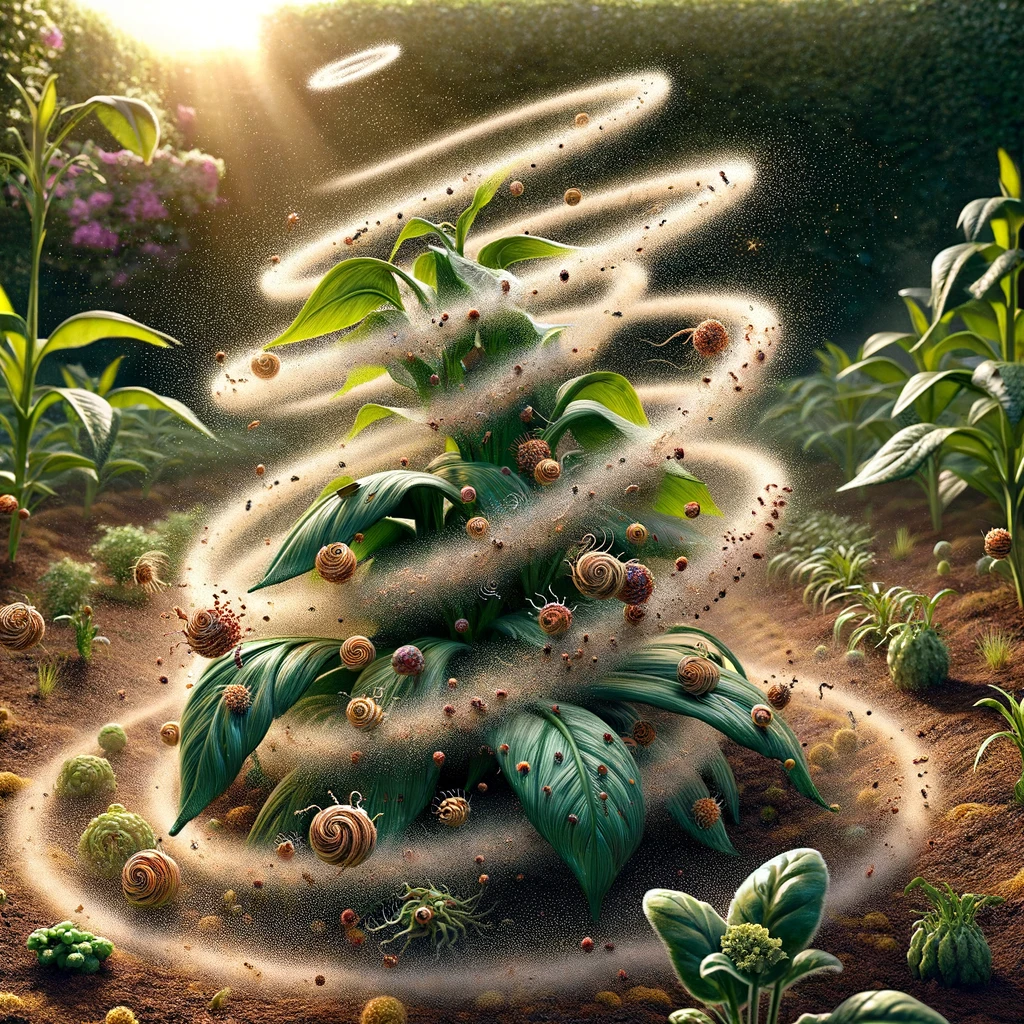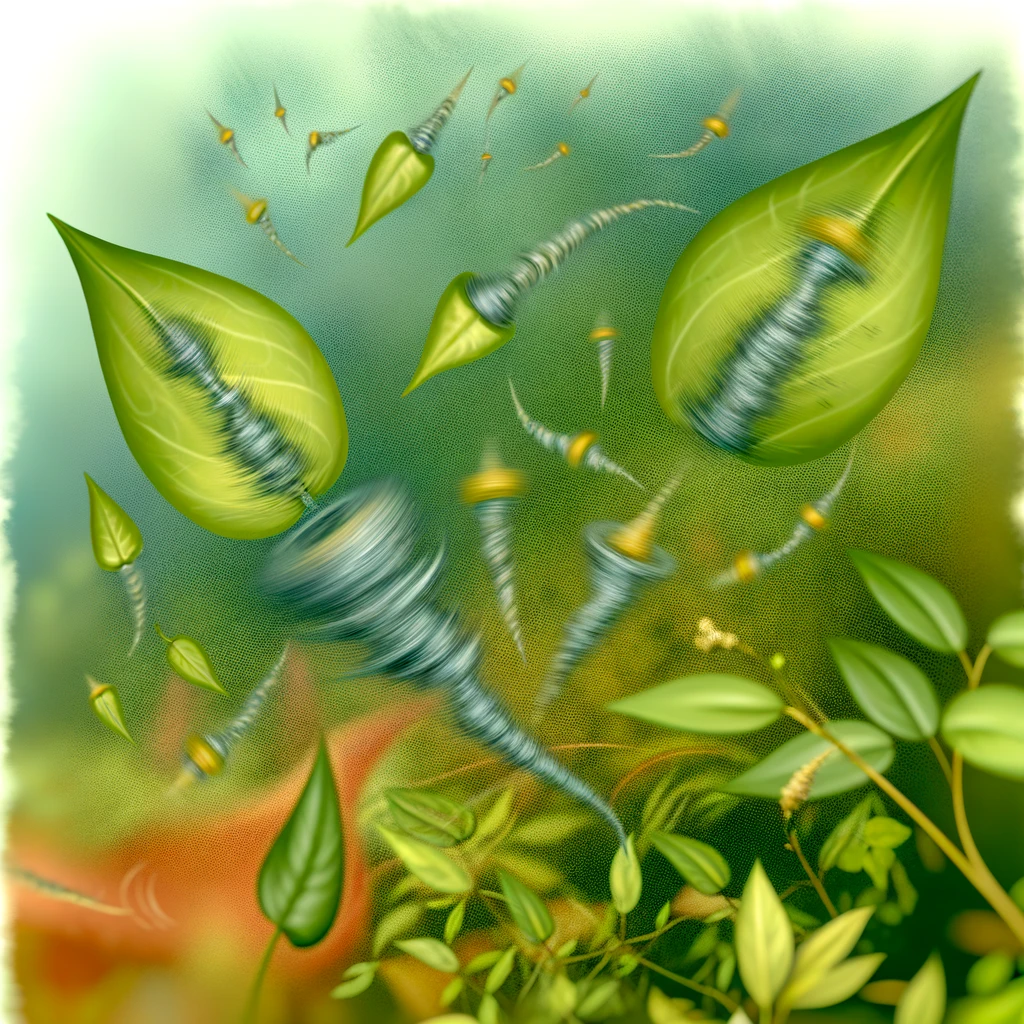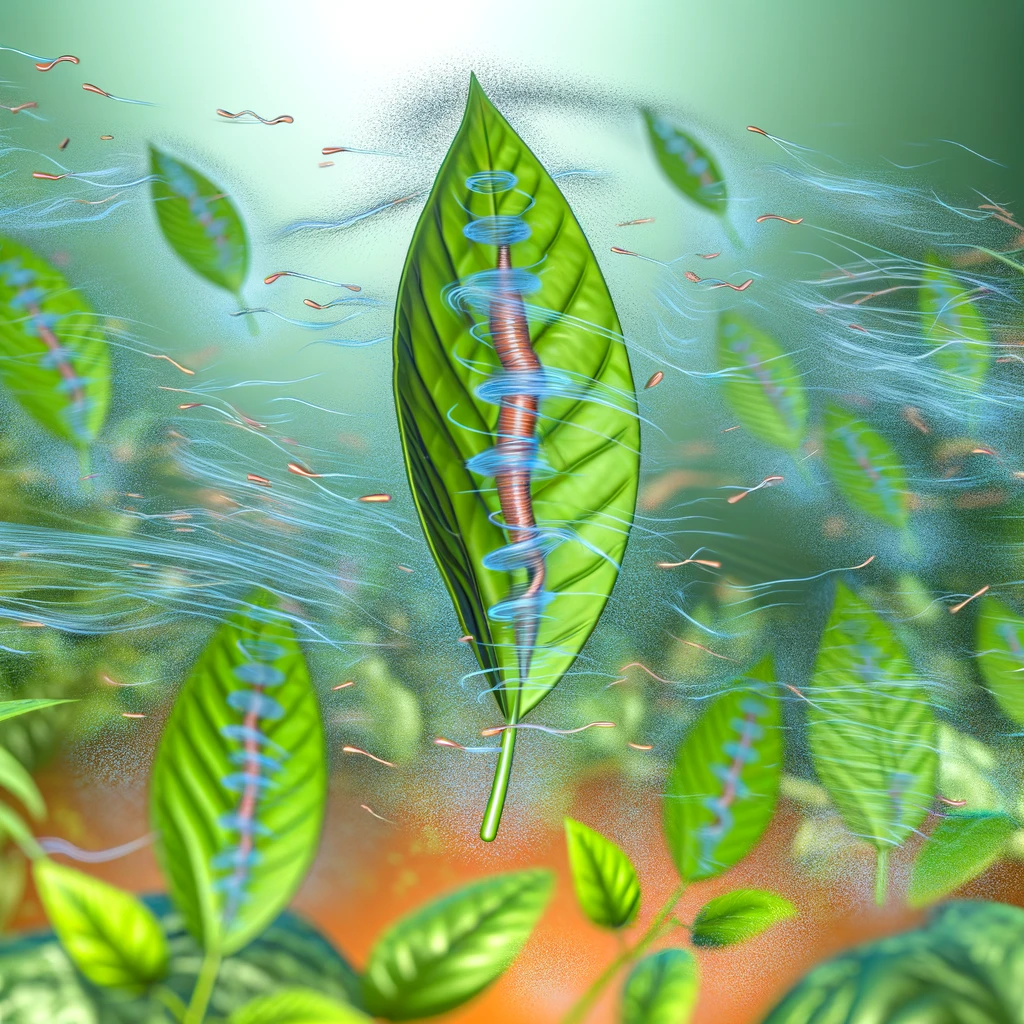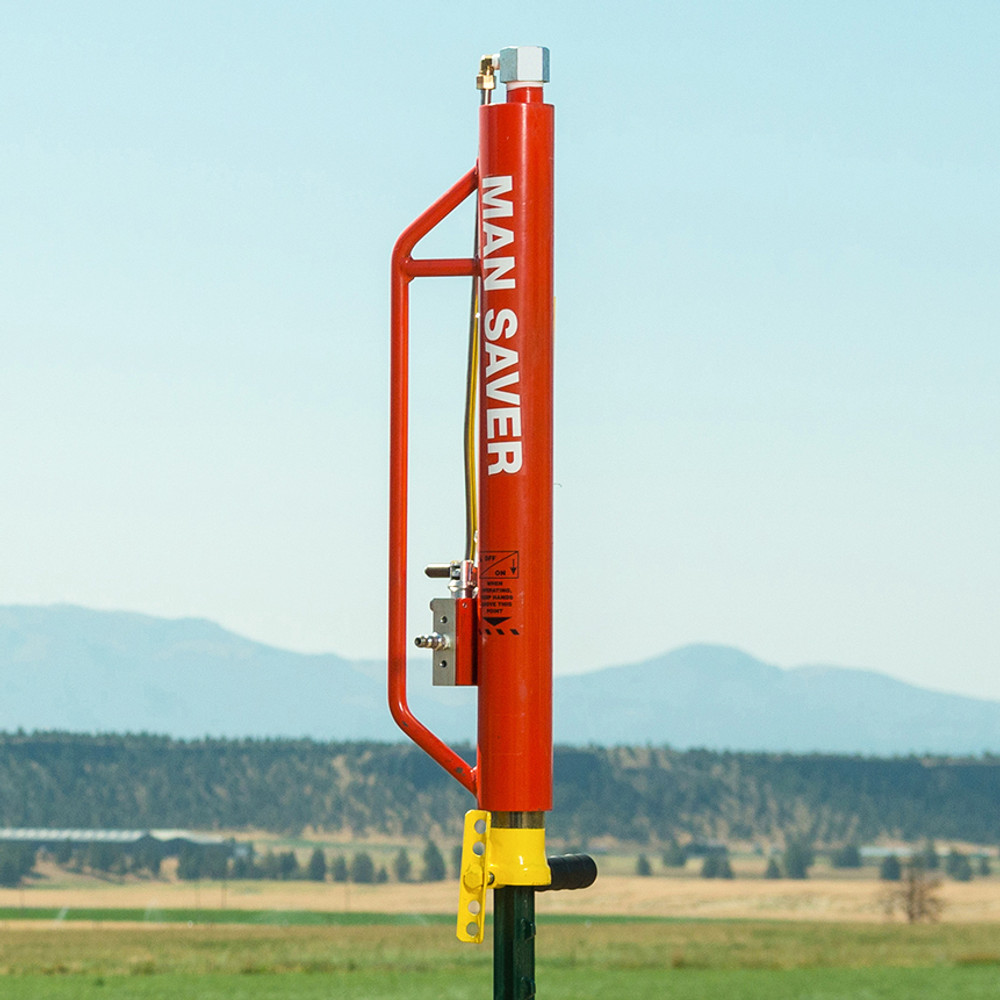From Cornell University 09/02/24

A new study led by Cornell University is the first to analyze plant spore dispersion at its source, where rain droplets shake flexible leaves to initially disperse pathogens.
When raindrops hit a leaf of a wheat plant infected with rust – a pathogenic spore that has decimated crops globally – the leaf flutters, creating tiny swirling vortices of air that disperse the spores, where they could end up infecting healthy plants.
An analysis of this effect using high-speed cameras, described in the Jan. 31 issue of Science Advances, could be a first step toward designing a strategy to help reduce pathogens – not just spores but also bacteria, oomycetes and viruses – from spreading from leaves.
Applying theoretical analysis to the high-speed camera footage, the researchers were able to predict the trajectory of spores and how they are carried by a swirling motion created by the vibrating leaves.

“It’s kind of a tiny tornado in the air,” said Sunghwan Jung, the paper’s corresponding author and professor at Cornell. Zixuan Wu, a doctoral student in Jung’s lab, is the paper’s first author.
For their analysis, researchers borrowed techniques typically used to study geophysical flows, which are large-scale oceanic and atmospheric air currents, and downsized them by a few orders of magnitude to understand and predict the swirls they found in the air around a bouncing wheat leaf.
“We describe the magnitudes of these kinds of swirling motion, and then when they will form and how spores move around, so everything is predictable,” Jung said.
Because of restrictions to working with actual live spores, the researchers used miniature hollow glass particles to mimic spores.

They used their methods to better understand how many spores might come off a leaf, where they might go and how they move away from an infected plant.
Ultimately, the study may inform future research that finds a way to prevent spores from infecting healthy plants at their source.
“We couldn’t figure out the solution yet,” Jung said. “But if we can control these kinds of vortex structures around the leaf somehow, then we can reduce the spread of spores to new plants.”



